36 Vegetarian Proteins You Should be Eating
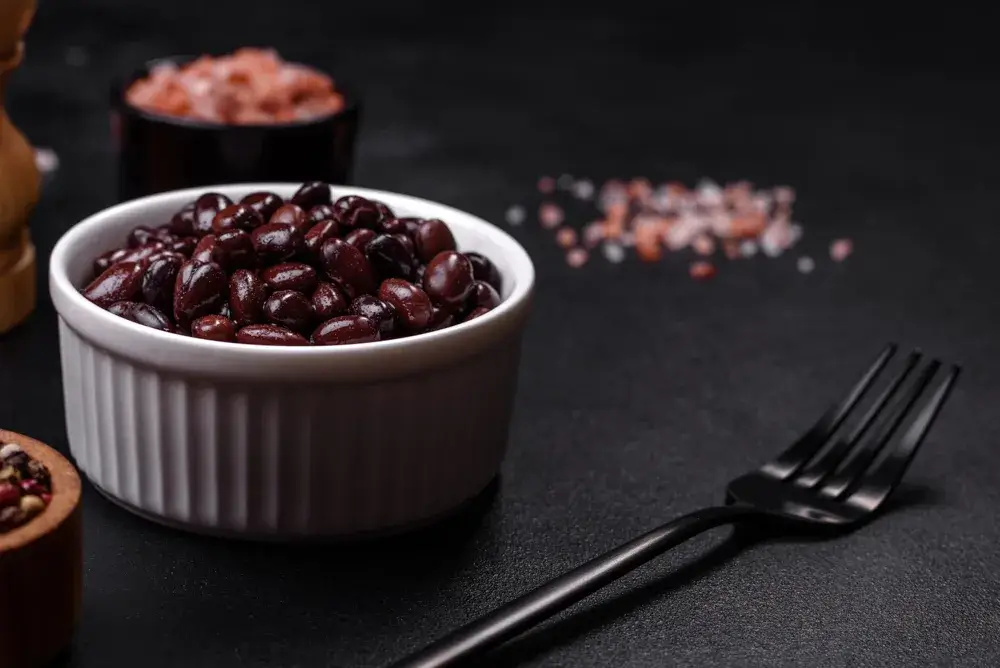
Are you ready to elevate your vegetarian diet with protein-packed foods? Whether you’re new to vegetarianism or a seasoned plant-based eater, getting enough protein is crucial. It’s essential for muscle repair, energy levels, weight loss, and overall health.
You may be wondering, ”Where do vegetarians get their protein?” Finding high-quality vegetarian proteins can seem tricky to most people. But it’s not.
Here are 36 vegetarian proteins that will not only meet your dietary needs but also taste great.
Including a variety of protein sources in your diet ensures you get all the essential amino acids your body needs. Besides, it keeps your meals exciting and flavorful. From legumes to nuts, seeds, grains, and vegetables, there’s a multitude of protein-rich options waiting for you.
So, let’s get to it and explore these fantastic plant-based protein options that will transform your meals and boost your health.

Legumes
1. Chickpeas
Nutritional Profile and protein quantity
Chickpeas, also known as garbanzo beans, are a fantastic nutrient-dense food. One cup of cooked chickpeas contains approximately 16 grams of protein according to FoodData Central. They’re also rich in fiber, iron, folate, and manganese, making them an excellent choice for vegetarians.
Health Benefits
Chickpeas support digestive health due to their high fiber content. They also help regulate your blood sugar levels and promote heart health. Besides, their iron content is beneficial for preventing anemia, especially in those who don’t consume meat.
Easy Recipes and Meal Ideas
Chickpeas are incredibly versatile. You can roast them for a crunchy snack, blend them into hummus, or add them to salads and stews. Try a chickpea curry or a Mediterranean chickpea salad for a protein-rich meal.
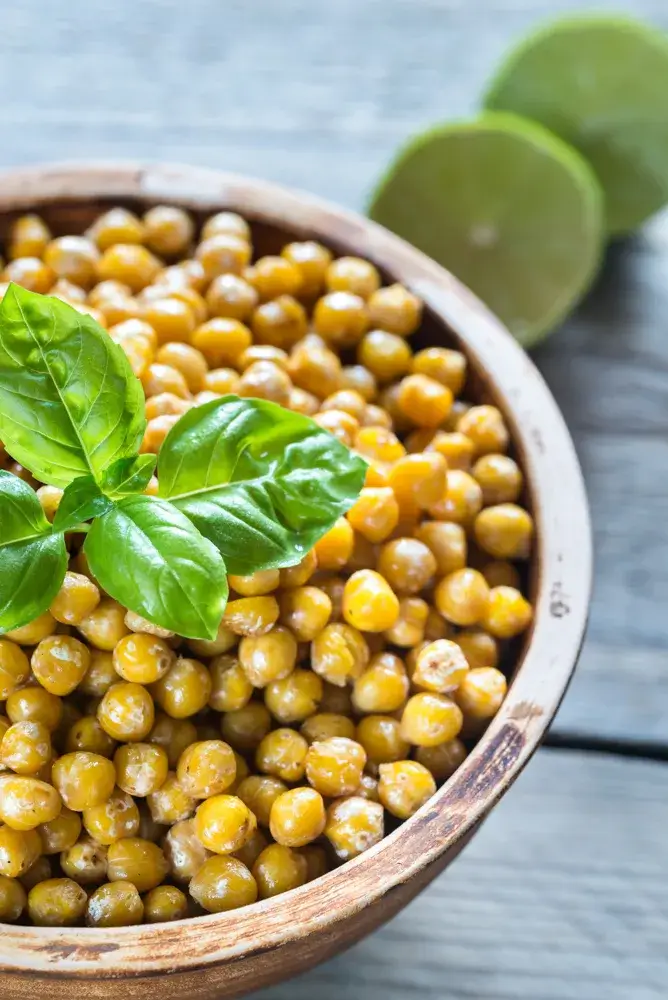
2. Lentils
Types of Lentils and Their Protein Content
Lentils come in various types, including green, brown, red, and black. Each type offers unique flavors and textures. A cup of cooked lentils provides about 18 grams of protein, making them a fantastic source of vegetarian proteins.
Health Benefits
These lens-shaped legumes are not only high in protein, but also packed with fiber, iron, and folate. They support heart health, stabilize blood sugar levels, and improve your digestive health. Moreover, if you’re watching your weight, they’re a great option for weight management due to their filling nature.
Cooking Tips and Recipes
Lentils cook quickly, making them perfect for weeknight dinners. You can use them in soups, stews, and salads, or make a hearty lentil curry. Red lentils are great for making dal, while green and brown lentils are great in salads.
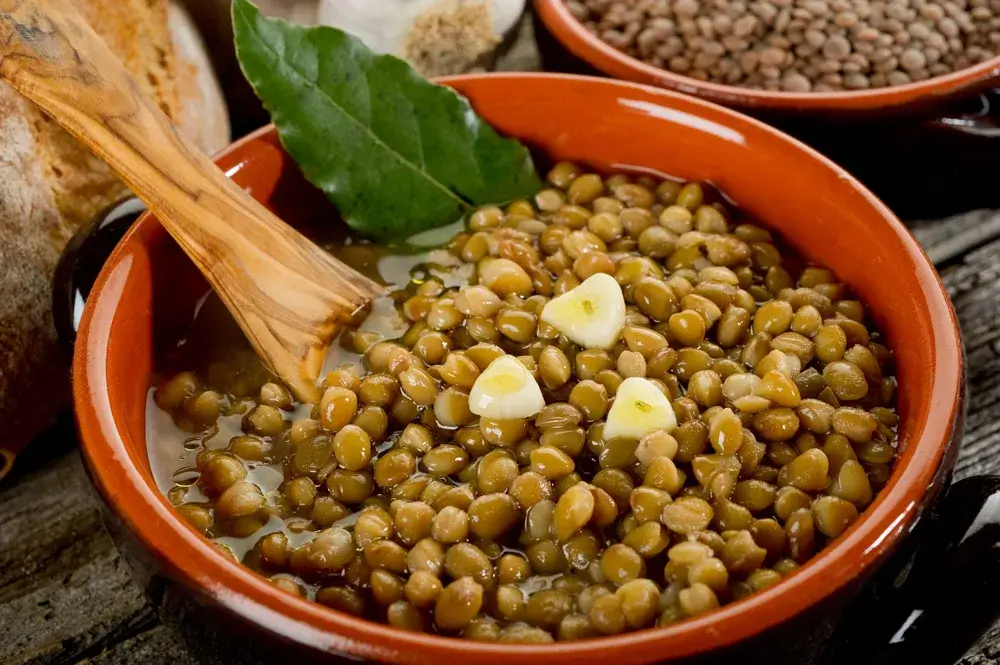
3. Black Beans
Nutritional Benefits
Black beans are another excellent source of vegetarian proteins. One cup gives you about 15 grams of protein. They are also high in fiber, antioxidants, and essential minerals like iron and magnesium.
Popular Dishes and Uses
Black beans are a staple in many cuisines. Use them in tacos, burritos, soups, and salads. A black bean salad with corn, avocado, and lime dressing is an awesome, protein-packed dish.
4. Kidney Beans
Protein Content
Kidney beans offer around 15 grams of protein per cup according to FoodData central, making them a robust protein source. They’re also rich in iron, potassium, and magnesium, essential for overall health.
Health Benefits
These beans support your heart health, thanks to their high fiber and antioxidant content. They also help control blood sugar levels and provide sustained energy.
Recipe Suggestions
Kidney beans are perfect for making chili, soups, and stews. A classic vegetarian chili with kidney beans, tomatoes, and spices is a hearty and a very satisfying meal.
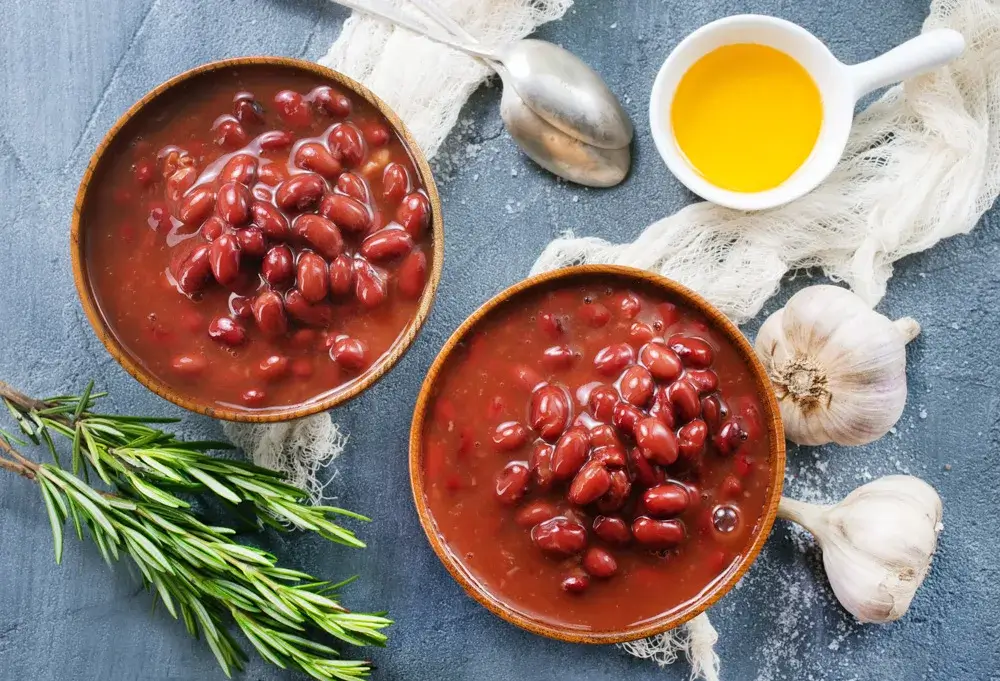
5. Peas
Types (Green Peas, Split Peas)
Peas come in several varieties, including green peas and split peas. Green peas provide about 8 grams of protein per cup, while split peas offer around 16 grams per cup.
Nutritional Profile
Peas are rich in vitamins A, C, and K, as well as fiber. They’re also a good source of iron and magnesium, contributing to overall nutritional balance.
How to Include in Meals
Add green peas to soups, stews, and salads, or enjoy them as a side dish. Split peas are excellent for making split pea soup, a comforting and protein-rich meal.
6. Navy Beans
Protein and Nutrient Content
Navy beans provide approximately 15 grams of protein per cup. They’re also high in fiber, iron, and magnesium, essential for maintaining good health.
Health Benefits
Navy beans support your heart health, digestive health, and help maintain stable blood sugar levels. They’re also beneficial for weight management due to their high fiber content.
Recipe Ideas
Navy beans are great for making baked beans, soups, and stews. A navy bean and vegetable soup is a delicious way to enjoy their benefits.
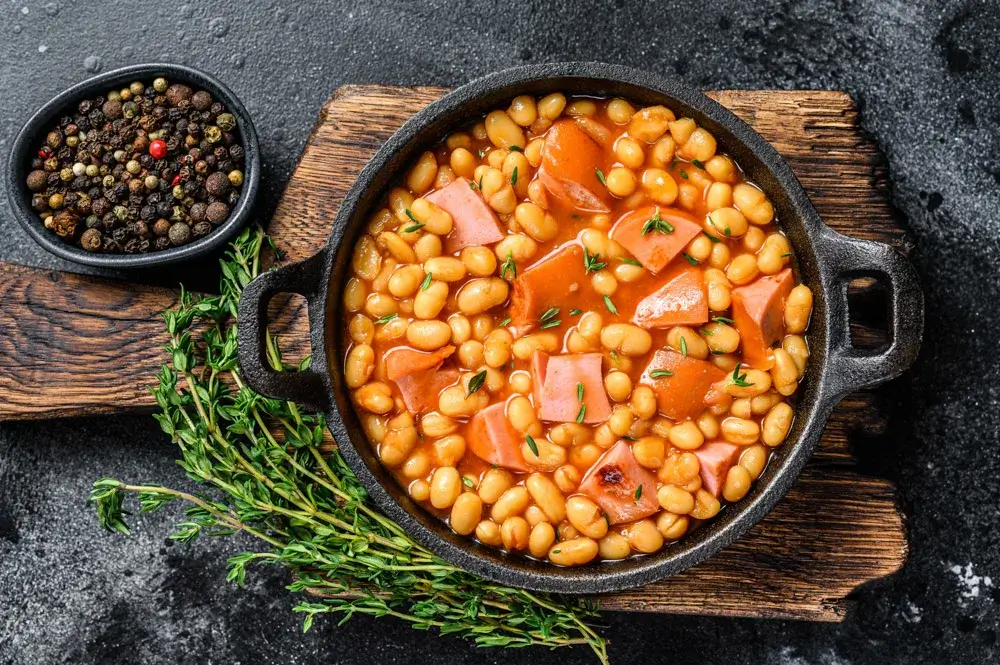
7. Pinto Beans
Nutritional Benefits
You get around 15 grams of protein from every cup of pinto beans. They’re also rich in fiber, iron, and antioxidants, which are vital for health.
Cooking Suggestions and Recipes
Pinto beans are commonly used in Mexican cuisine. Make refried beans, add them to burritos, or create a flavorful pinto bean stew. A simple pinto bean salad with tomatoes, onions, and cilantro is a quick and nutritious option.
Include these legumes into your diet to ensure a diverse intake of high-quality vegetarian proteins. They not only provide essential nutrients but also add variety and flavor to your meals.
Nuts and Seeds
8. Almonds
Protein and Nutrient Content
Almonds are a fantastic source of vegetarian proteins. Just one ounce, about 23 almonds, a handful, provides 6 grams of protein. Additionally, almonds are rich in healthy fats, fiber, vitamin E, magnesium, and antioxidants. These nutrients make almonds a powerhouse of health benefits.
Health Benefits
Almonds are not only delicious but also incredibly nutritious. They can help lower cholesterol levels, support heart health, and aid in weight management. The high antioxidant content, particularly vitamin E, helps protect your cells from oxidative damage. Besides, their fiber content promotes good digestion and keeps you feeling full longer, which is great for weight control.
Snack and Meal Ideas
Incorporating almonds into your diet is easy and tasty. For a quick snack, enjoy a handful of raw or roasted almonds. You can also add sliced almonds to your morning oatmeal, sprinkle them over salads, or use almond butter as a spread on toast. You can also try adding almonds to your smoothies or baking them into healthy granola bars.

9. Chia Seeds
Protein Content
Chia seeds might be tiny, but they are packed with quite a bit protein. Taking just two tablespoons of chia seeds gives you about 4 grams of protein. They are also an excellent source of omega-3 fatty acids, fiber, and various micronutrients.
Benefits for Digestion and Heart Health
Chia seeds are incredibly beneficial for your digestive system. Their high fiber content promotes regular bowel movements and helps keep your gut healthy. Furthermore, the omega-3 fatty acids in chia seeds support heart health by reducing inflammation and lowering blood pressure. They also help in maintaining healthy cholesterol levels.
Easy Ways to Incorporate into Diet
Adding chia seeds to your diet is simple. Mix them into your yogurt, sprinkle them over cereal, or blend them into smoothies. For a unique and nutritious breakfast, make chia pudding by soaking chia seeds in almond milk overnight and topping it with fresh fruits and nuts.
You can also use chia seeds as an egg substitute in baking – perfect for vegan recipes! Here are more creative ways you can include chia seeds in your diet and enjoy their benefits.
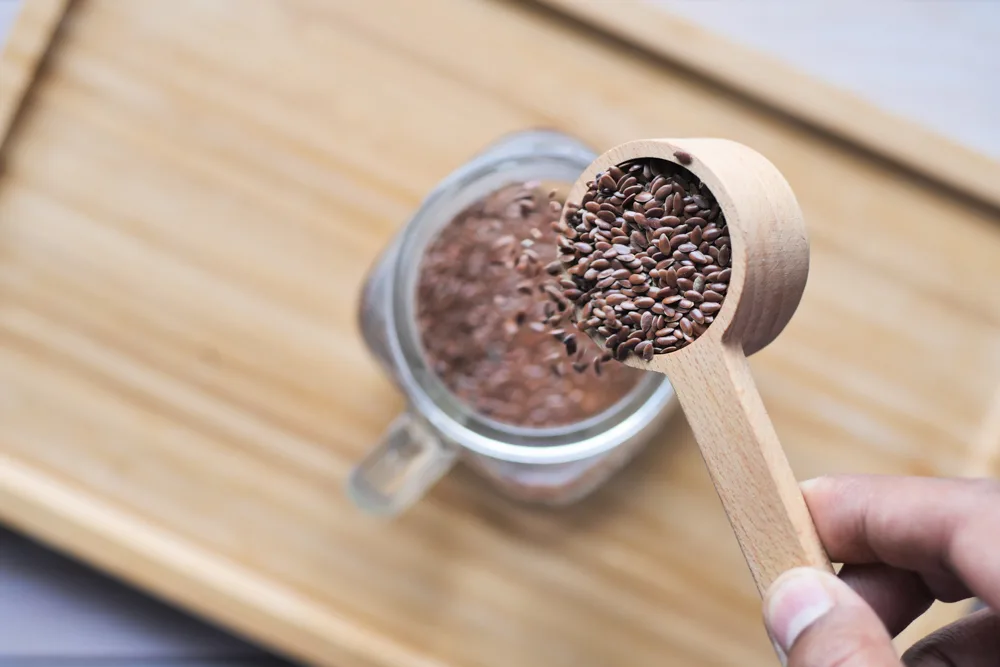
10. Flaxseeds
Nutritional Profile
Flaxseeds are another excellent source of vegetarian proteins, with about 1.9 grams of protein per tablespoon. They are also rich in omega-3 fatty acids, fiber, and lignans, which have antioxidant properties.
Health Benefits
The nutritional benefits of flaxseeds are impressive. They can help improve digestion, reduce inflammation, and lower the risk of heart disease. The fiber in flaxseeds aids in maintaining bowel regularity, while the omega-3s support heart health. Additionally, flaxseeds have been linked to a lower risk of certain cancers due to their high lignan content.
Usage Tips
To get the most benefits from flaxseeds, it’s best to consume them ground rather than whole, as this makes it easier for your body to absorb the nutrients. You can add ground flaxseeds to your smoothies, oatmeal, or yogurt. They also make a great addition to baked goods like muffins and bread. Try sprinkling them over salads or incorporating them into homemade energy bars.
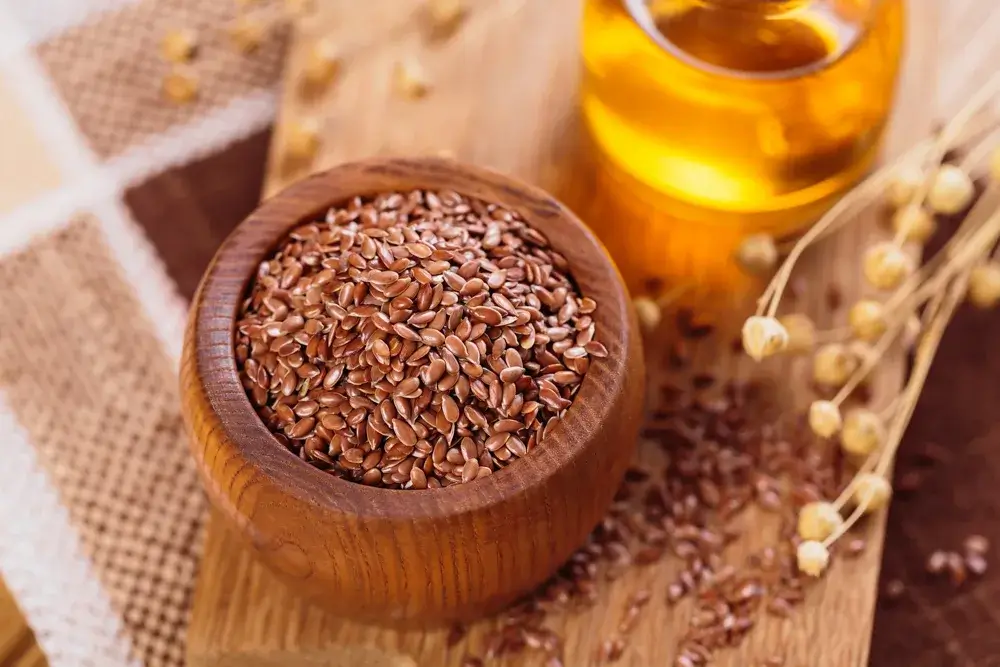
11. Pumpkin Seeds
Protein and Mineral Content
Pumpkin seeds, or pepitas, are a nutritious snack that provides about 6 grams of protein per ounce. They are also rich in essential minerals like magnesium, zinc, and iron, which are crucial for various bodily functions.
Health Benefits
Eating pumpkin seeds can offer numerous health benefits. They support your heart health, boost immune function, and improve sleep quality due to their high magnesium content. The zinc in pumpkin seeds is vital for immune health and wound healing, while their iron content helps prevent anemia.
Recipes and Snack Ideas
Pumpkin seeds are incredibly versatile. You can eat them raw or roasted for a crunchy snack. They also make a great topping for salads, soups, and oatmeal. Try adding them to homemade trail mix or granola for that extra protein boost. You can make spiced roasted pumpkin seeds with a bit of olive oil, salt, and your favorite spices.
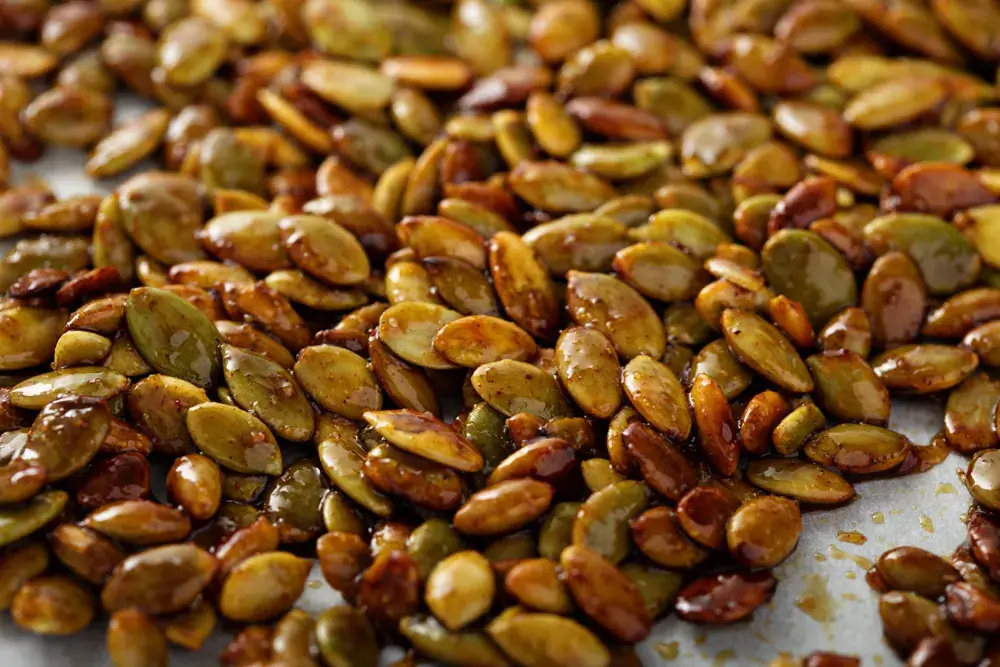
12. Sunflower Seeds
Nutritional Benefits
Sunflower seeds are another excellent source of vegetarian proteins, offering about 6 grams of protein per ounce. They are also rich in healthy fats, vitamin E, selenium, and magnesium, making them a highly nutritious snack.
How to Use in Meals and Snacks
Sunflower seeds are easy to include into your diet. Enjoy them as a snack on their own, or add them to salads, yogurt, and oatmeal. They can also be used in baking – try adding them to bread, muffins, or homemade granola bars. Additionally, sunflower seed butter is a great alternative to nut butters and can be spread on toast or used in smoothies.
13. Walnuts
Protein and Omega-3 Content
Walnuts are not only a good source of protein, with about 4 grams per ounce, but also one of the best plant-based sources of omega-3 fatty acids. These healthy fats are crucial for brain health and reducing inflammation in the body.
Health Benefits
Walnuts offer numerous health benefits. They support heart health by improving your cholesterol levels and reducing inflammation. The antioxidants in walnuts also help you fight oxidative stress, which can contribute to chronic diseases. Additionally, their omega-3 content is beneficial for brain health and cognitive function.
Recipe Ideas and Uses
Walnuts are incredibly versatile. You can enjoy them as a snack, or add them to your morning oatmeal or yogurt. They also make a great addition to salads, providing a satisfying crunch. For a delicious treat, try baking them into cookies or brownies. You can also use walnut butter as a spread or incorporate it into smoothies for an extra protein boost.
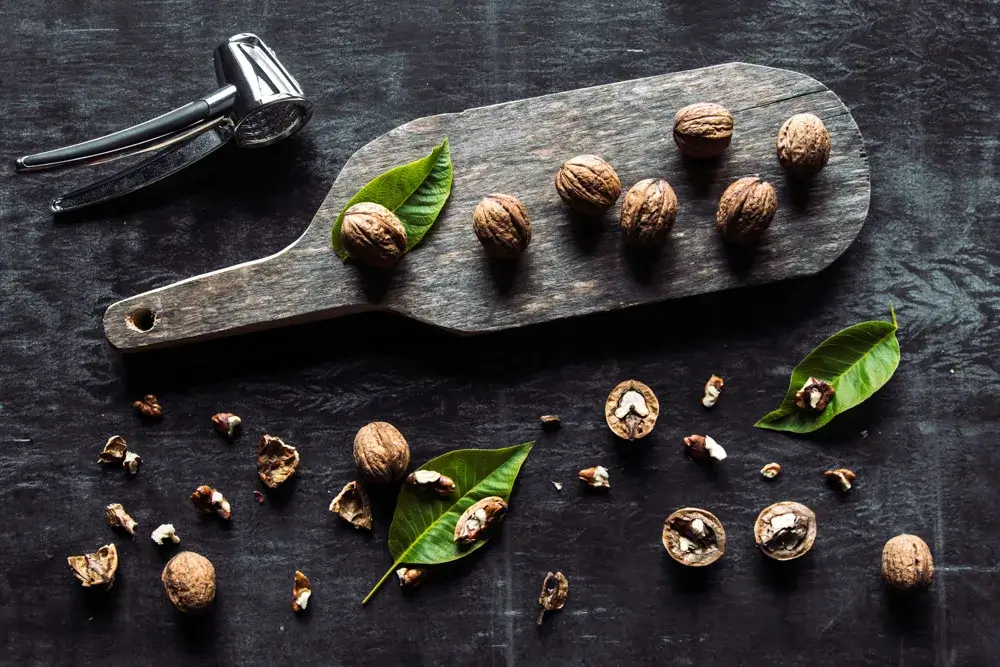
By including these nuts and seeds in your diet, you’ll ensure a diverse intake of high-quality vegetarian proteins. They not only provide essential nutrients but also add variety and flavor to your meals.
Grains
14. Quinoa
Complete Protein Profile
Quinoa is a superstar among grains, primarily because it’s a complete protein. This means it contains all nine essential amino acids that our bodies cannot produce on their own. One cup of cooked quinoa provides about 8 grams of protein, making it a fantastic source of vegetarian proteins. Besides protein, quinoa is also rich in fiber, iron, magnesium, and manganese.
Health Benefits
Quinoa is highly beneficial for overall health. It helps maintain healthy blood sugar levels, supports heart health, and aids in weight management due to its high fiber content. Additionally, its rich nutrient profile contributes to bone health and energy production.
Cooking Tips and Recipes
Quinoa is incredibly versatile and easy to cook. To prepare, rinse the quinoa thoroughly to remove its natural coating, which can be bitter. Use a 2:1 ratio of water to quinoa, bring to a boil, then simmer for about 15 minutes until the water is absorbed. Fluff with a fork before serving. Try using quinoa as a base for salads, bowls, or as a side dish. You can make a quinoa and vegetable stir-fry or a quinoa and black bean salad with lime dressing for a simple and easy meal.
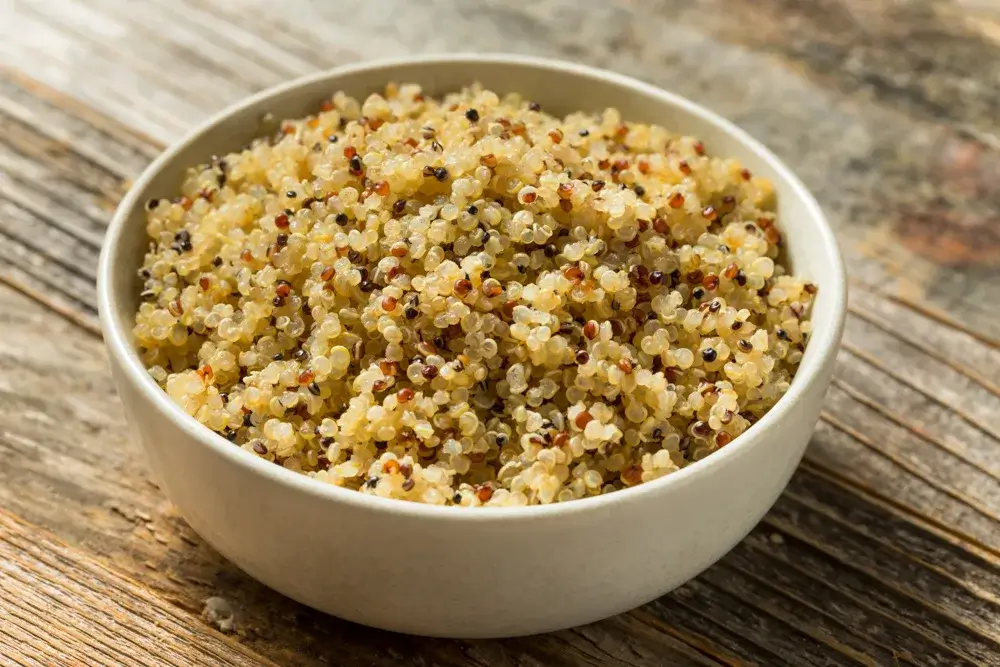
15. Amaranth
Nutritional Profile
Amaranth is another excellent grain that is very nutritious. One cup of cooked amaranth offers about 9 grams of protein according to FoodData Central, making it a powerful source of vegetarian proteins. It is also rich in fiber, iron, magnesium, phosphorus, and manganese.
Health Benefits
The health benefits of amaranth are impressive. It supports heart health, aids in digestion, and helps maintain stable blood sugar levels. Its high iron content is particularly beneficial for preventing anemia, especially in those on a plant-based diet.
How to Include in Your Diet
Incorporating amaranth into your diet is simple. Cook it similarly to quinoa, using a 2.5:1 ratio of water to amaranth, and simmer until the water is absorbed. Use it as a base for breakfast porridge, salads, or side dishes. You can also use amaranth flour in baking, adding a nutritional boost to bread, muffins, and pancakes.
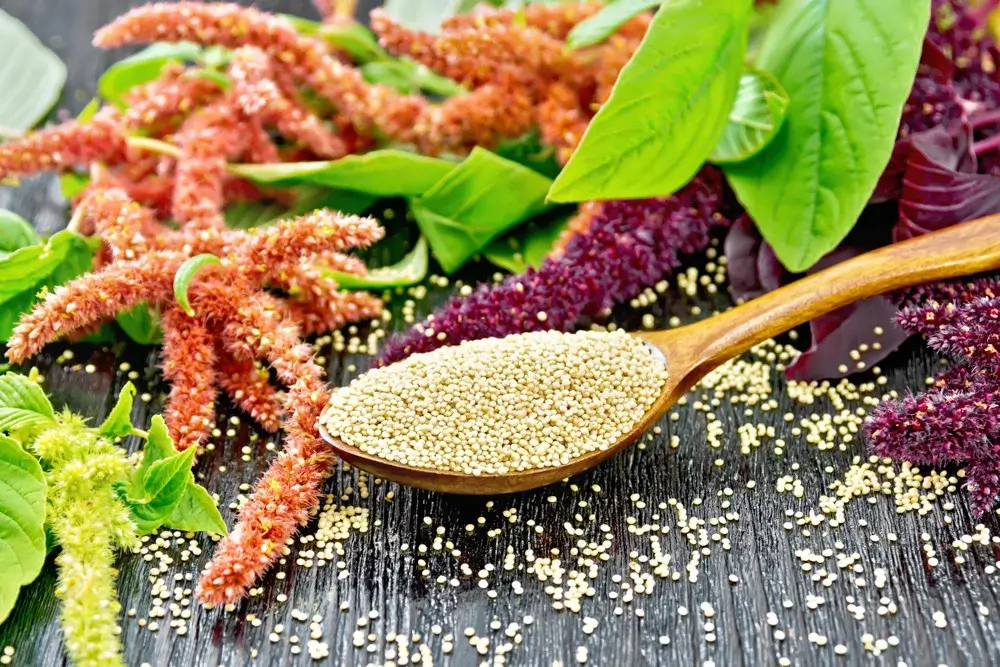
16. Farro
Protein Content and Nutritional Benefits
Farro is an old-school grain that has been cherished for years. One cup of cooked farro provides about 6 grams of protein. Additionally, it is rich in fiber, iron, magnesium, and zinc, making it a nutritious addition to any diet.
Recipe Ideas
Farro is perfect for salads, soups, and side dishes. Cook it by simmering in water or broth until tender. Try making a farro salad with roasted vegetables and a lemon vinaigrette for a refreshing, protein-rich meal. You can also use it in place of rice in dishes like risotto, providing a nutty flavor and chewy texture.
17. Millet
Nutritional Benefits
Millet is a versatile grain that offers about 6 grams of protein per cup when cooked. It’s also high in fiber, magnesium, phosphorus, and antioxidants. These nutrients contribute to various health benefits, including improved digestion and heart health.
How to Cook and Use in Meals
Cooking millet is straightforward. Rinse the grains, then use a 2:1 ratio of water to millet. Bring to a boil, then simmer until the water is absorbed and the millet is tender. Use millet in porridge, salads, or as a side dish. For a delicious twist, try making millet pilaf with vegetables and herbs, or add it to soups for extra texture and nutrition.
18. Buckwheat
Protein and Nutrient Content
Buckwheat is a gluten-free grain that offers you about 6 grams of protein per cup when cooked. It’s also rich in fiber, magnesium, manganese, and various antioxidants, making it a highly nutritious option for those seeking vegetarian proteins.
Health Benefits
Buckwheat supports heart health, helps control blood sugar levels, and aids in digestion. Its high antioxidant content also helps protect your body from oxidative stress, which can lead to chronic diseases.
Cooking Suggestions
Buckwheat can be cooked similarly to rice. Rinse the grains, then use a 2:1 ratio of water to buckwheat. Bring to a boil, then simmer until tender. Use it in salads, as a side dish, or in breakfast porridge. Buckwheat flour is also great for baking, adding a nutty flavor to pancakes, waffles, and bread.
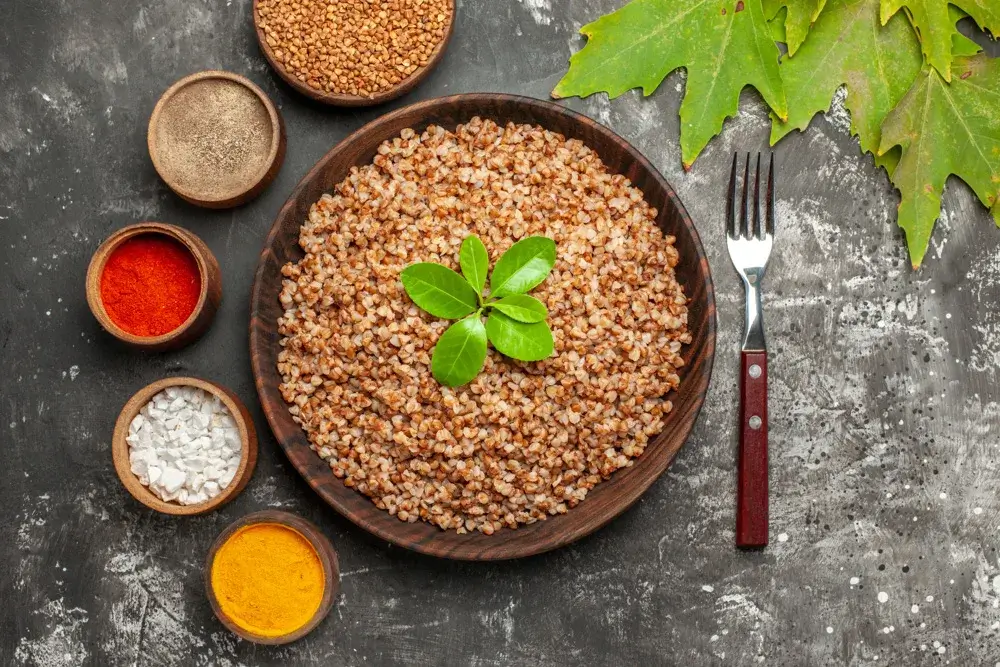
19. Teff
Nutritional Profile
Teff is a tiny and very nutrious grain. One cup of cooked teff provides about 10 grams of protein, making it one of the highest-protein grains available. It is also rich in fiber, iron, calcium, and various essential amino acids.
Health Benefits
Teff is beneficial for maintaining healthy bones, supporting digestive health, and preventing anemia. Its high iron content is particularly valuable for those who follow a vegetarian diet, as iron is crucial for transporting oxygen in the blood.
Recipe Ideas
Teff can be used in many ways. You can cook it into a porridge for a nutritious breakfast, or use it as a base for salads and side dishes. Teff flour is also excellent for baking, adding a unique flavor and nutritional boost to bread, muffins, and pancakes. Try making injera, a traditional Ethiopian flatbread, for a delicious and authentic way to enjoy teff.
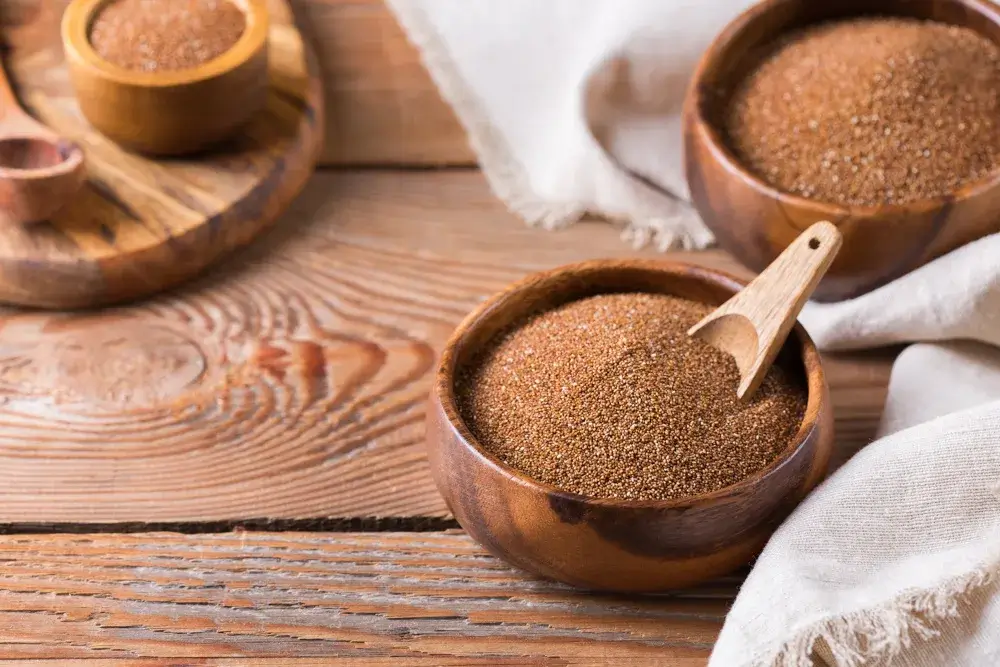
Vegetables
20. Spinach
Protein Content and Nutritional Profile
Spinach is not only a nutrient-rich vegetable but also a good source of vegetarian proteins. One cup of cooked spinach contains about 5 grams of protein. It’s also packed with vitamins A, C, and K, as well as iron, calcium, and magnesium.
Health Benefits
Spinach is fantastic for your health. It supports your eye health, thanks to its high vitamin A content. The iron in spinach helps prevent anemia, while its calcium and magnesium contribute to strong bones. Plus, its antioxidants protect your cells from damage.
Recipes and Usage Tips
Incorporating spinach into your diet is easy. You can add fresh spinach to smoothies. Use it as a base for salads or sauté it with garlic for a simple side dish. You can also blend it into soups and stews or add it to omelets and quiches for extra protein.
21.Broccoli
Protein and Vitamin Content
Broccoli is another excellent vegetable for vegetarian proteins. One cup of cooked broccoli provides about 4 grams of protein. It’s also rich in vitamins C and K, folate, and fiber.
Health Benefits
Broccoli supports immune health due to its high vitamin C content. It also promotes bone health with its vitamin K and calcium. The fiber in broccoli aids digestion and helps maintain healthy cholesterol levels.
Cooking Ideas
Broccoli can be enjoyed in many ways. You can steam it as a side dish, or add it to stir-fries and casseroles. Try roasting broccoli with a drizzle of olive oil and a sprinkle of sea salt for a delicious, crispy treat. Broccoli also works well in soups, pasta dishes, and salads.
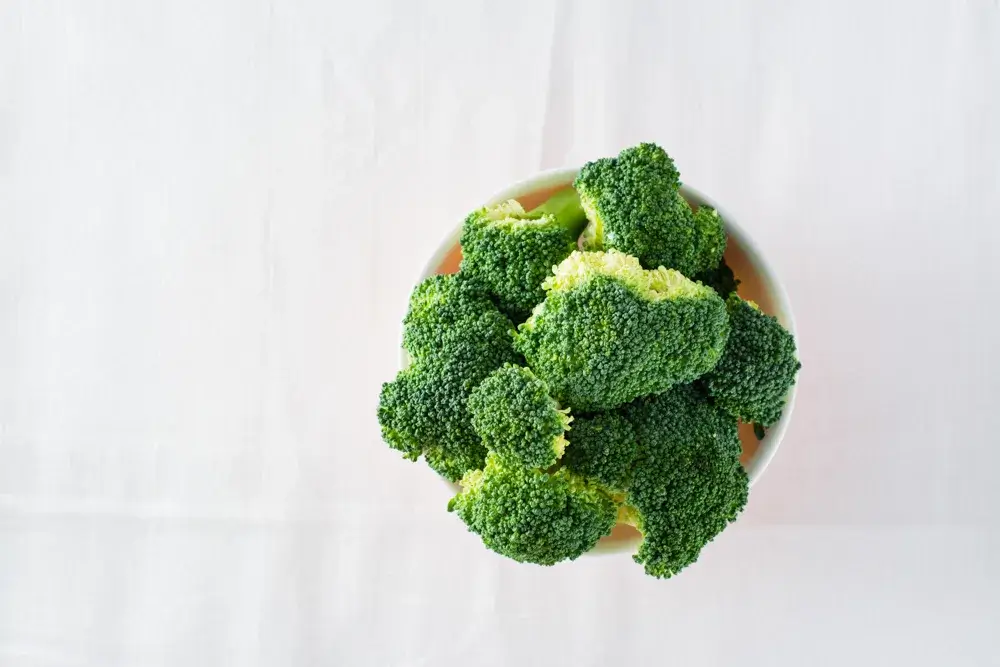
22. Brussels Sprouts
Nutritional Benefits
Brussels sprouts are packed with nutrients and provide about 4 grams of protein per cup. They are also high in vitamins C and K, fiber, and antioxidants.
How to Cook and Include in Meals
To enjoy Brussels sprouts, try roasting them with a bit of olive oil and balsamic vinegar. You can also steam or sauté them with garlic and herbs. They make a great addition to salads, or you can include them in casseroles and grain bowls for extra nutrition.
23. Kale
Protein Content and Health Benefits
Kale is a nutritious vegetable, offering about 3 grams of protein per cup. It’s also rich in vitamins A, C, and K, as well as calcium and antioxidants.
Recipes and Tips
Add raw kale to smoothies for a green nutrient boost. Massage kale with olive oil and lemon juice for a tender, flavorful salad. You can also bake kale into crispy chips, add it to soups, or sauté it with garlic and onions for a healthy side dish.
24. Artichokes
Protein and Fiber Content
Artichokes provide about 5 grams of protein per cup and are also rich in fiber, vitamins C and K, and folate.
Health Benefits
Artichokes support digestive health due to their high fiber content. They also help maintain healthy cholesterol levels and provide antioxidants that protect against cellular damage.
How to Prepare and Use
Steam artichokes and serve them with a dipping sauce for a delicious appetizer. You can also add artichoke hearts to salads, pasta dishes, and pizzas. For a unique take, try blending artichokes into a creamy dip.
25. Asparagus
Nutritional Profile
Asparagus is a nutrient-dense vegetable that provides you about 4 grams of protein per cup. It’s also rich in vitamins A, C, and K, folate, and fiber.
Health Benefits
Asparagus supports digestive health and helps maintain healthy cholesterol levels. Its high vitamin content promotes eye health and boosts the immune system.
Recipe Ideas
Grill or roast asparagus with a bit of olive oil, salt, and pepper for a tasty side dish. Add it to salads, pasta dishes, or stir-fries. You can also wrap asparagus spears in prosciutto for a delicious appetizer.
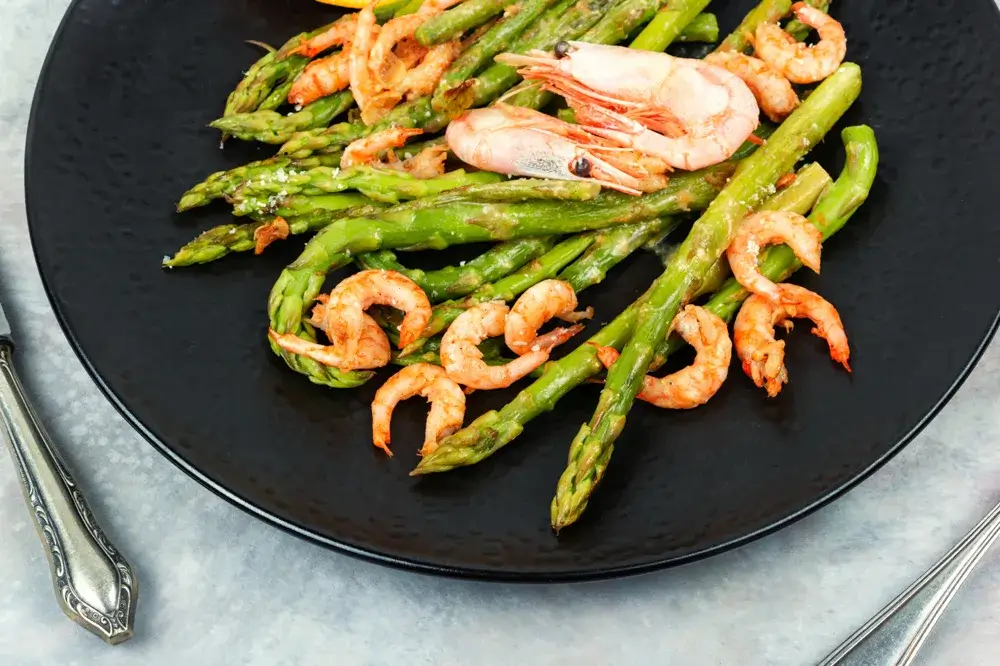
Dairy and Dairy Alternatives
26. Greek Yogurt
Protein Content and Nutritional Profile
Greek yogurt is an excellent source of vegetarian proteins, offering about 10 grams of protein per 100 grams. You also get 111mg of calcium in that portion. It’s also rich in probiotics, and vitamins B12 and D.
Health Benefits
Greek yogurt supports digestive health due to its probiotic content. It also helps you maintain strong bones with its high calcium levels. Additionally, the protein in Greek yogurt helps keep you full and supports muscle repair.
Usage Ideas
Enjoy Greek yogurt on its own, or add fresh fruit and nuts for a nutritious snack. You can also use it in smoothies, parfaits, and as a base for salad dressings and dips. Try substituting Greek yogurt for sour cream in recipes for a healthier take.
27. Cottage Cheese
Nutritional Benefits
Cottage cheese is another great source of protein, with about 11 grams of protein per 100 grams. It’s also rich in calcium, phosphorus, and B vitamins.
How to Include in Meals Cottage cheese can be enjoyed on its own or mixed with fruit for a sweet snack. Add it to salads, or use it as a topping for toast. You can also incorporate cottage cheese into pancakes and baked goods for added protein.
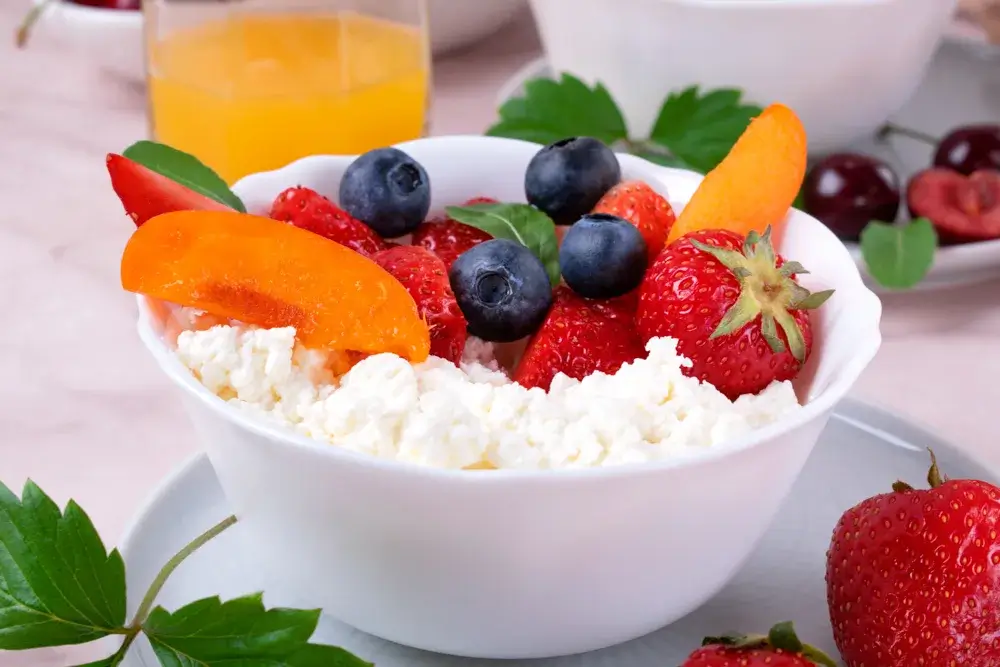
28. Cheese
Types of Cheese with High Protein Content
Various types of cheese are rich in protein. Parmesan, for instance, offers about 10 grams of protein per ounce, while cheddar and mozzarella provide about 7 grams per ounce.
Health Benefits
Cheese is a good source of calcium, which is essential for bone health. It also contains vitamins A and B12, zinc, and phosphorus.
Recipes and Tips
Add cheese to sandwiches, salads, and casseroles. Use it as a topping for pasta dishes and pizzas. You can also enjoy cheese with whole-grain crackers or fruit for a nutritious snack.
29. Tofu
Nutritional Profile
Tofu is a versatile source of vegetarian proteins, providing about 8 grams of protein per 100 grams. It’s also rich in calcium, iron, and various essential amino acids.
Health Benefits
Tofu supports bone health and muscle repair. Its high iron content helps prevent anemia, while its calcium content supports strong bones.
Cooking Suggestions
Tofu can be used in a variety of dishes. Marinate and grill tofu for a tasty addition to salads and bowls. Use it in stir-fries, soups, and curries. You can also blend silken tofu into smoothies or desserts for a creamy texture.
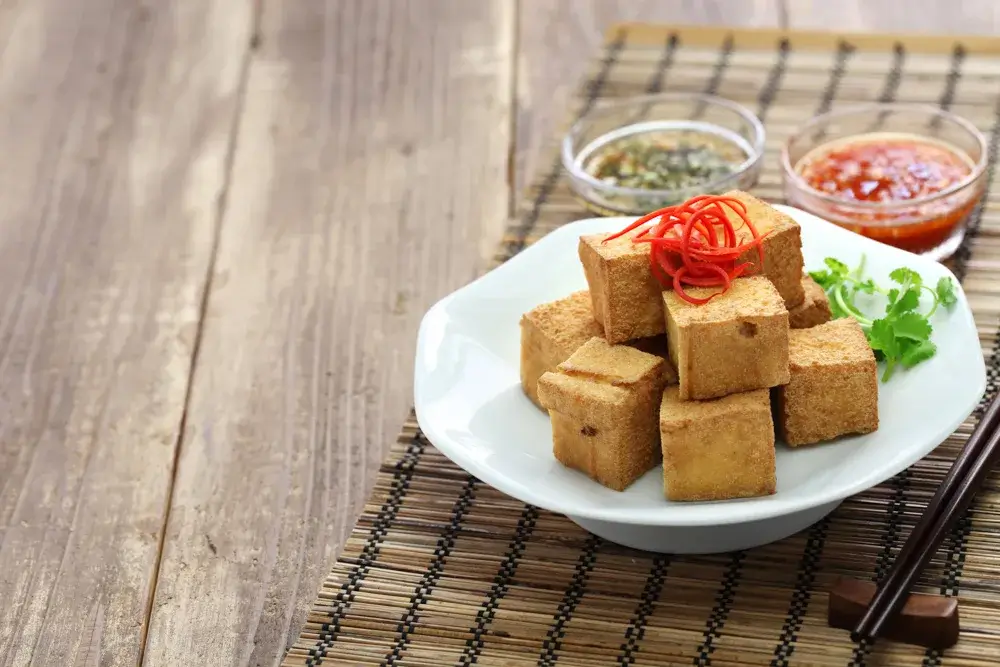
30. Tempeh
Protein Content and Nutritional Benefits
Tempeh is a fermented soybean product that provides about 19 grams of protein per 100 grams. It’s also rich in probiotics, fiber, and essential vitamins and minerals.
Recipe Ideas
Use tempeh in stir-fries, sandwiches, and salads. You can also crumble it and use it as a meat substitute in tacos and chili. Marinated and grilled tempeh makes a delicious and protein-packed addition to any meal.
31. Soy Milk
Nutritional Benefits
Soy milk is a popular dairy alternative that provides about 7 grams of protein per cup. It’s also fortified with calcium, vitamin D, and vitamin B12.
How to Use in Meals and Recipes
Use soy milk in smoothies, cereals, and coffee. It’s also great for baking and cooking, as it can be substituted for cow’s milk in most recipes. Try making a creamy soy milk-based soup or use it in pancake batter for a protein boost.
Other Sources
32. Seitan
Protein Content and Nutritional Profile
Seitan, often called “wheat meat,” is a fantastic source of vegetarian proteins. Made from gluten, the main protein in wheat, seitan contains about 25 grams of protein per 3.5 ounces (100 grams). It’s also low in fat and carbohydrates, making it a popular meat substitute among vegetarians and people on a plant-based diet.
Health Benefits
Seitan is rich in protein, which is essential for muscle repair and growth. Additionally, it provides small amounts of iron, calcium, and phosphorus.
However, because it’s made from wheat gluten, it’s not suitable for those with celiac disease or gluten sensitivity. Nevertheless, for those who can tolerate gluten, seitan is a highly nutritious and great option.
How to Prepare and Use
Preparing seitan at home is easy and cost-effective. You can buy vital wheat gluten and mix it with water and seasonings to form a dough, then simmer or steam it until cooked. Use seitan in stir-fries, sandwiches, and salads. It absorbs flavors well, so marinate it with your favorite spices and sauces for a delicious, protein-packed meal. Try slicing it into strips for a stir-fry or dicing it for stews and soups.
33. Edamame
Nutritional Benefits
Edamame, or young soybeans, are a tasty and nutritious snack. One cup of cooked edamame provides about 18 grams of protein, making it a rich source of vegetarian proteins. They are also high in fiber, vitamins A and C, iron, and calcium.
Easy Recipes and Meal Ideas
Edamame is incredibly versatile and can be enjoyed in many ways. For a simple snack, steam edamame in their pods and sprinkle with sea salt. Add shelled edamame to salads, soups, and stir-fries for a protein boost. You can also blend edamame into a dip similar to hummus, perfect for pairing with veggies and crackers.
For a nutritious take, try incorporating edamame into grain bowls or pasta dishes. Check out detailed edamame recipes here.
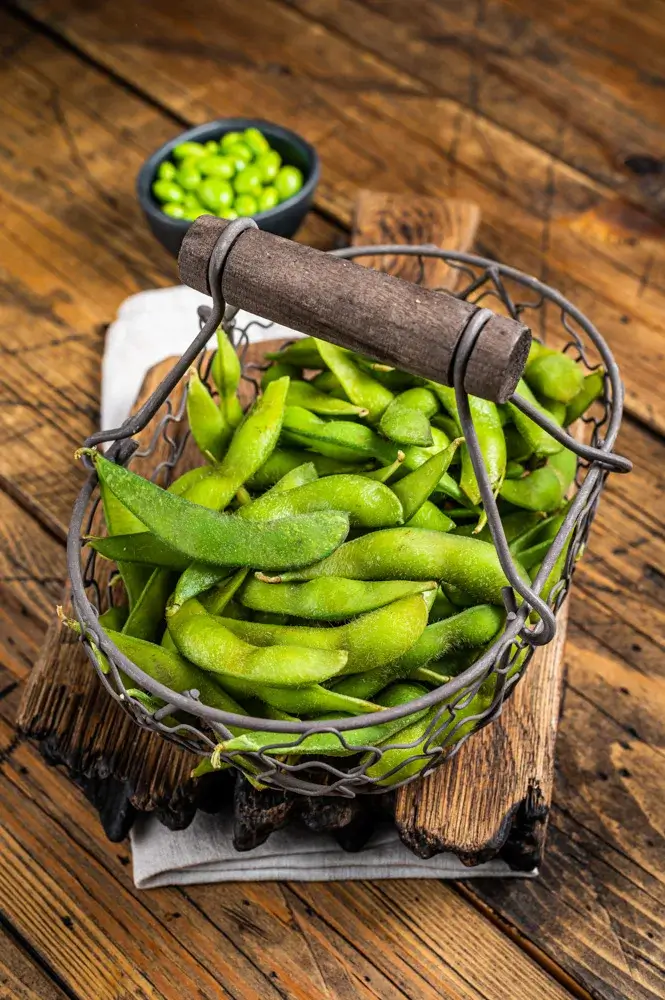
34. Hemp Seeds
Protein and Omega-3 Content
Hemp seeds are a nutritional powerhouse, offering about 10 grams of protein per 3 tablespoons. They are also an excellent source of omega-3 and omega-6 fatty acids, which are crucial for heart and brain health. Additionally, hemp seeds contain essential minerals like magnesium, zinc, and iron.
Health Benefits
Hemp seeds support your heart health due to their healthy fat content. They also aid in digestion, thanks to their high fiber content, and help maintain muscle mass with their rich protein profile. The omega-3 fatty acids in hemp seeds are beneficial for reducing inflammation and supporting brain health.
How to Use in Meals
Incorporating hemp seeds into your diet is easy. Sprinkle them over yogurt, oatmeal, and salads for a nutritional boost. You can blend them into smoothies or mix them into granola and baked goods. Hemp seeds can also be used to make hemp milk, a dairy-free alternative that’s great for smoothies and coffee. Try adding hemp seeds to homemade energy bars or protein balls for a healthy, on-the-go snack.
35. Nutritional Yeast
Protein and Vitamin Content
Nutritional yeast is a unique and flavorful source of vegetarian proteins. Two tablespoons provide about 5 grams of protein and a wealth of B vitamins, including B12, which is often lacking in vegetarian diets. It’s also fortified with folic acid, zinc, and selenium.
Health Benefits
Nutritional yeast supports immune health and energy production due to its high B vitamin content. It’s also rich in antioxidants, which help protect your body from oxidative stress. Additionally, its complete protein profile makes it a valuable addition to a vegetarian diet.
Usage Tips and Recipes
Nutritional yeast has a cheesy, nutty flavor, making it a popular vegan cheese substitute. Sprinkle it over popcorn, pasta, and salads for a savory flavor boost. You can blend it into sauces and soups for added creaminess and nutrition. You can also mix nutritional yeast into mashed potatoes, tofu scrambles, and casseroles. For a delicious and healthy snack, try making cheesy kale chips with nutritional yeast.
36. Miso
Nutritional Profile
Miso, a fermented soybean paste, is another excellent source of vegetarian proteins. One tablespoon of miso provides about 2 grams of protein. It’s also rich in vitamins, minerals, and beneficial probiotics, which support gut health.
Health Benefits
Miso promotes your digestive health due to its probiotic content. It also supports the immune system and provides essential nutrients like vitamin K, manganese, and copper. The fermentation process enhances the bioavailability of these nutrients, making them easier for your body to absorb.
Recipe Ideas
Miso adds a deep, umami flavor to various dishes. Use it to make traditional miso soup by dissolving a tablespoon of miso paste in hot water and adding tofu, seaweed, and scallions. Incorporate miso into salad dressings, marinades, and sauces for a flavorful kick. You can also use it to enhance the taste of stir-fries, soups, and roasted vegetables. For a unique take, try making a miso glaze for grilled eggplant or mushrooms.

Conclusion
In conclusion, incorporating a variety of vegetarian proteins into your diet is essential for balanced nutrition. Not only do these proteins support muscle growth and repair, but they also provide a multitude of other nutrients like fiber, vitamins, and minerals.
By diversifying your protein sources, you ensure that you’re getting a broad spectrum of nutrients, which can improve your overall health and well-being.
So, don’t be afraid to experiment with different sources of vegetarian proteins. Each one of the above suggestions offers unique flavors and textures, adding excitement and variety to your meals. Try new recipes, explore different cuisines, and find creative ways to incorporate these proteins into your diet.
Remember, maintaining a balanced vegetarian diet is all about variety and creativity. By including a wide range of protein sources, you can meet your nutritional needs while enjoying delicious and satisfying meals.
Remember, the key to a healthy diet is not just about eating the right foods but also enjoying them. And if you’re a beginner, start small. Try swapping your meats with lentils or any of the beans.
So, explore, experiment, and enjoy the journey to better health with these fantastic vegetarian proteins.